| | | | | Class A Common Stock(1) | | | Class B Common Stock(2) | |
| | Name of Beneficial Owner | | | Number of
Shares and
Nature of
Beneficial
Ownership(3) | | | % of
Class | | | Number of
Shares and
Nature of
Beneficial
Ownership(3) | | | % of
Class | |
| | Named Executive Officers: | | | | | | | | | | | | | |
| | Mark B. Rourke | | | — | | | — | | | 1,353,349 | | | 1.45% | |
| | Darrell G. Campbell | | | — | | | — | | | 2,038 | | | * | |
| | Shaleen Devgun | | | — | | | — | | | 367,430 | | | * | |
| | James S. Filter | | | — | | | — | | | 158,109 | | | * | |
| | Robert Reich | | | — | | | — | | | 165,217 | | | * | |
| | Stephen Bruffett | | | — | | | — | | | 244,288 | | | * | |
| | All Directors, Nominees and Executive Officers as a Group | | | 33,211,800 | | | 40.0% | | | 10,729,418 | | | 11.34% | |
*
Less than 1%.
(1)
Each share of the Company’s Class A Common stock is entitled to 10 votes per share. The Schneider National, Inc. Voting Trust is the record holder of all shares of Class A common stock.
(2)
Each share of the Company’s Class B common stock is entitled to 1 vote per share.
(3)
Except as indicated below, all persons have represented to us that they exercise sole voting power and sole investment power with respect to their shares. For our named executive officers, the Class B common stock amounts include the following vested and unexercised stock options and those stock options subject to vesting within 60 days of February 20, 2024: For Mr. Rourke, 463,575 stock options; for Mr. Devgun, 78,202 stock options; for Mr. Filter, 11,830 stock options; for Mr. Reich, 44,011 stock options; for Mr. Bruffett, 124,609 stock options; and for our directors, nominees and executive officers as a group, 789,850 stock options.
(4)
Consists of (i) 83,029,500 Class A shares held in trust for the benefit of members of the Schneider family for which Ms. Klimpel serves as co-trustee, over which Ms. Klimpel has shared voting and dispositive power, subject to the terms of the Voting Trust, (ii) 13,907,084 Class B shares held in trust for which Ms. Klimpel serves as co-trustee, over which Ms. Klimpel has shared voting and dispositive power, and (iii) 15,625,383 Class B shares held in trust for which Ms. Klimpel serves as sole trustee, over which she has sole voting and dispositive power. The Class A shares are represented by trust certificates issued by the Voting Trust. Ms. Klimpel’s address is c/o Godfrey and Kahn, 833 East Michigan St., Suite 1800, Milwaukee, WI 53202.
(5)
Consists of (i) 5,695,390 Class B shares held by trusts for which Mr. Gannon serves as co-trustee, over which he has shared voting and dispositive power and (ii) 170,666 Class B shares held directly by Mr. Gannon and his spouse, over which he and his spouse have sole voting and dispositive power.
(6)
Consists of (i) 16,605,900 Class A shares held in trusts for the benefit of Mr. Schneider and his descendants for which Mr. Schneider serves as co-trustee with Ms. Klimpel, over which Mr. Schneider has shared voting and dispositive power, subject to the terms of the Voting Trust, (ii) 1,449,320 Class B shares held in trusts for the benefit of Mr. Schneider and his descendants for which Mr. Schneider serves as co-trustee with Ms. Klimpel, over which Mr. Schneider has shared voting and dispositive power, and (iii) 3,181,050 Class B shares held directly by Mr. Schneider, over which Mr. Schneider has sole voting and dispositive power. Mr. Schneider’s interest in the Class A shares is represented by trust certificates issued by the Voting Trust.
(7)
Consists of Class A shares over which the members of the Corporate Governance Committee, who serve as the trustees of the Voting Trust, have shared voting power with the trustees of the trusts which have deposited such shares into the Voting Trust, subject to the terms of the Voting Trust.
(8)
Consists of (i) 16,605,900 Class A shares held in trusts for the benefit of Mr. Schneider and his descendants for which Mr. Schneider serves as co-trustee with Ms. Klimpel, over which Mr. Schneider has shared voting and dispositive power, subject to the terms of the Voting Trust, (ii) 1,286,120 Class B shares held in trusts for the benefit of Mr. Schneider and his descendants for which Mr. Schneider serves as co-trustee with Ms. Klimpel, over which Mr. Schneider has shared voting and dispositive power, and (iii) 526,599 Class B shares held directly by Mr. Schneider, over which Mr. Schneider has sole voting and dispositive power. Mr. Schneider’s interest in the Class A shares is represented by trust certificates issued by the Voting Trust
(9)
Consists of (i) 16,605,900 Class A shares held in trusts for the benefit of Ms. DePrey and her descendants for which Ms. DePrey serves as co-trustee with Ms. Klimpel, over which Ms. DePrey has shared voting and dispositive power, subject to the terms of the Voting Trust, (ii) 807,100 Class B shares held in trusts for the benefit of Ms. DePrey and her descendants for which Ms. DePrey serves as co-trustee with Ms. Klimpel, over which Ms. DePrey has shared voting and dispositive power, subject to the terms of the Voting Trust, (ii) 807,100 Class B shares held in trusts for the benefit of Ms. DePrey and her descendants for which Ms. DePrey serves as co-trustee with Ms. Klimpel, over

![[MISSING IMAGE: lg_schneider-pn.jpg]](https://capedge.com/proxy/DEF 14A/0001104659-24-034832/lg_schneider-pn.jpg)

![[MISSING IMAGE: lg_schneider-pn.jpg]](https://capedge.com/proxy/DEF 14A/0001104659-24-034832/lg_schneider-pn.jpg)

![[MISSING IMAGE: hd_schneider-pn.jpg]](https://capedge.com/proxy/DEF 14A/0001104659-24-034832/hd_schneider-pn.jpg)

![[MISSING IMAGE: sg_jameslwelch-bw.jpg]](https://capedge.com/proxy/DEF 14A/0001104659-24-034832/sg_jameslwelch-bw.jpg)

![[MISSING IMAGE: sg_markbrourke-bw.jpg]](https://capedge.com/proxy/DEF 14A/0001104659-24-034832/sg_markbrourke-bw.jpg)

![[MISSING IMAGE: sg_thomasjackson-bw.jpg]](https://capedge.com/proxy/DEF 14A/0001104659-24-034832/sg_thomasjackson-bw.jpg)
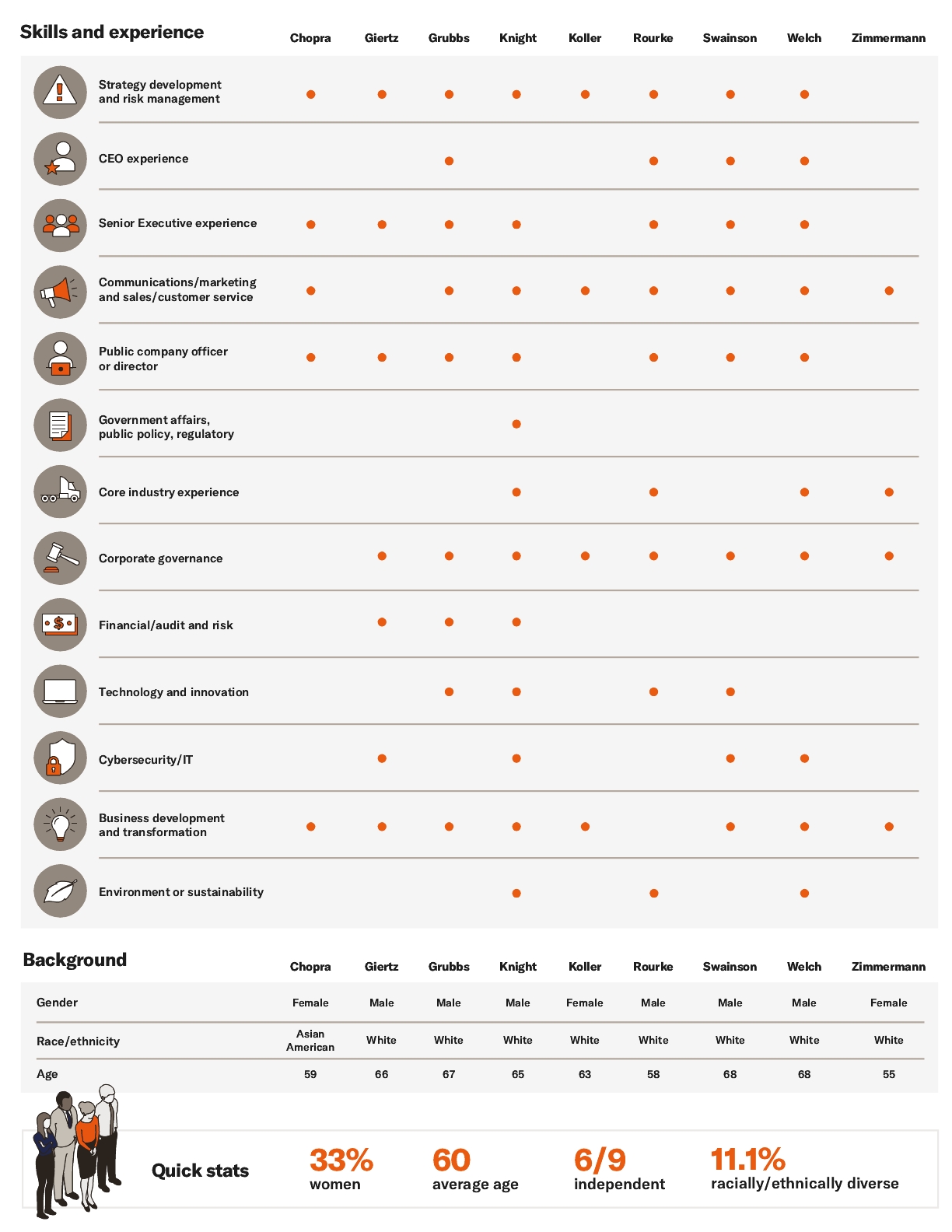
![[MISSING IMAGE: tb_skillsexperience-pn.jpg]](https://capedge.com/proxy/DEF 14A/0001104659-24-034832/tb_skillsexperience-pn.jpg)
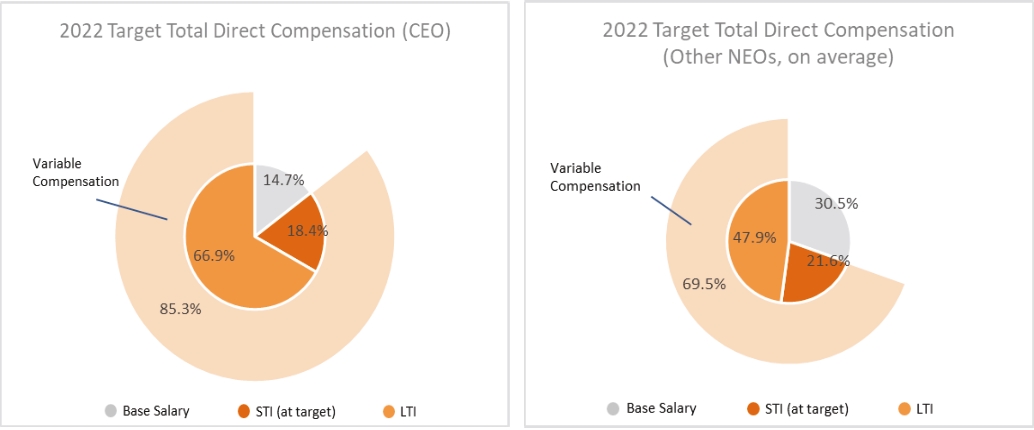
![[MISSING IMAGE: pc_compensation-pn.jpg]](https://capedge.com/proxy/DEF 14A/0001104659-24-034832/pc_compensation-pn.jpg)
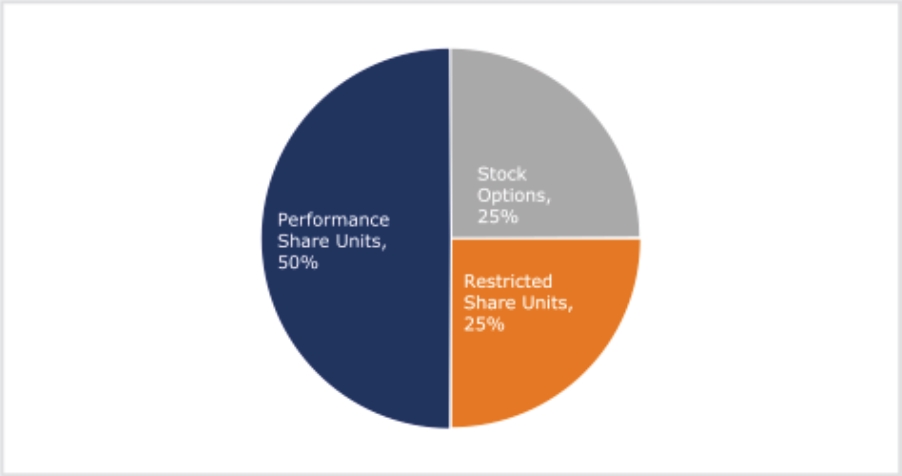
![[MISSING IMAGE: pc_stock-pn.jpg]](https://capedge.com/proxy/DEF 14A/0001104659-24-034832/pc_stock-pn.jpg)

![[MISSING IMAGE: ph_jyotichopra-4c.jpg]](https://capedge.com/proxy/DEF 14A/0001104659-24-034832/ph_jyotichopra-4c.jpg)

![[MISSING IMAGE: ph_marydeprey-4clr.jpg]](https://capedge.com/proxy/DEF 14A/0001104659-24-034832/ph_marydeprey-4clr.jpg)
![[MISSING IMAGE: ph_jamesgiertz-4c.jpg]](https://capedge.com/proxy/DEF 14A/0001104659-24-034832/ph_jamesgiertz-4c.jpg)

![[MISSING IMAGE: ph_bobgrubbs-4c.jpg]](https://capedge.com/proxy/DEF 14A/0001104659-24-034832/ph_bobgrubbs-4c.jpg)

![[MISSING IMAGE: ph_robknight-4c.jpg]](https://capedge.com/proxy/DEF 14A/0001104659-24-034832/ph_robknight-4c.jpg)

![[MISSING IMAGE: ph_markrourke-4c.jpg]](https://capedge.com/proxy/DEF 14A/0001104659-24-034832/ph_markrourke-4c.jpg)


![[MISSING IMAGE: ph_juliekstreich-4clr.jpg]](https://capedge.com/proxy/DEF 14A/0001104659-24-034832/ph_juliekstreich-4clr.jpg)

![[MISSING IMAGE: ph_johnswainson-4c.jpg]](https://capedge.com/proxy/DEF 14A/0001104659-24-034832/ph_johnswainson-4c.jpg)

![[MISSING IMAGE: ph_jameswelch-4c.jpg]](https://capedge.com/proxy/DEF 14A/0001104659-24-034832/ph_jameswelch-4c.jpg)
![[MISSING IMAGE: ph_kathleenzimmerman-4c.jpg]](https://capedge.com/proxy/DEF 14A/0001104659-24-034832/ph_kathleenzimmerman-4c.jpg)
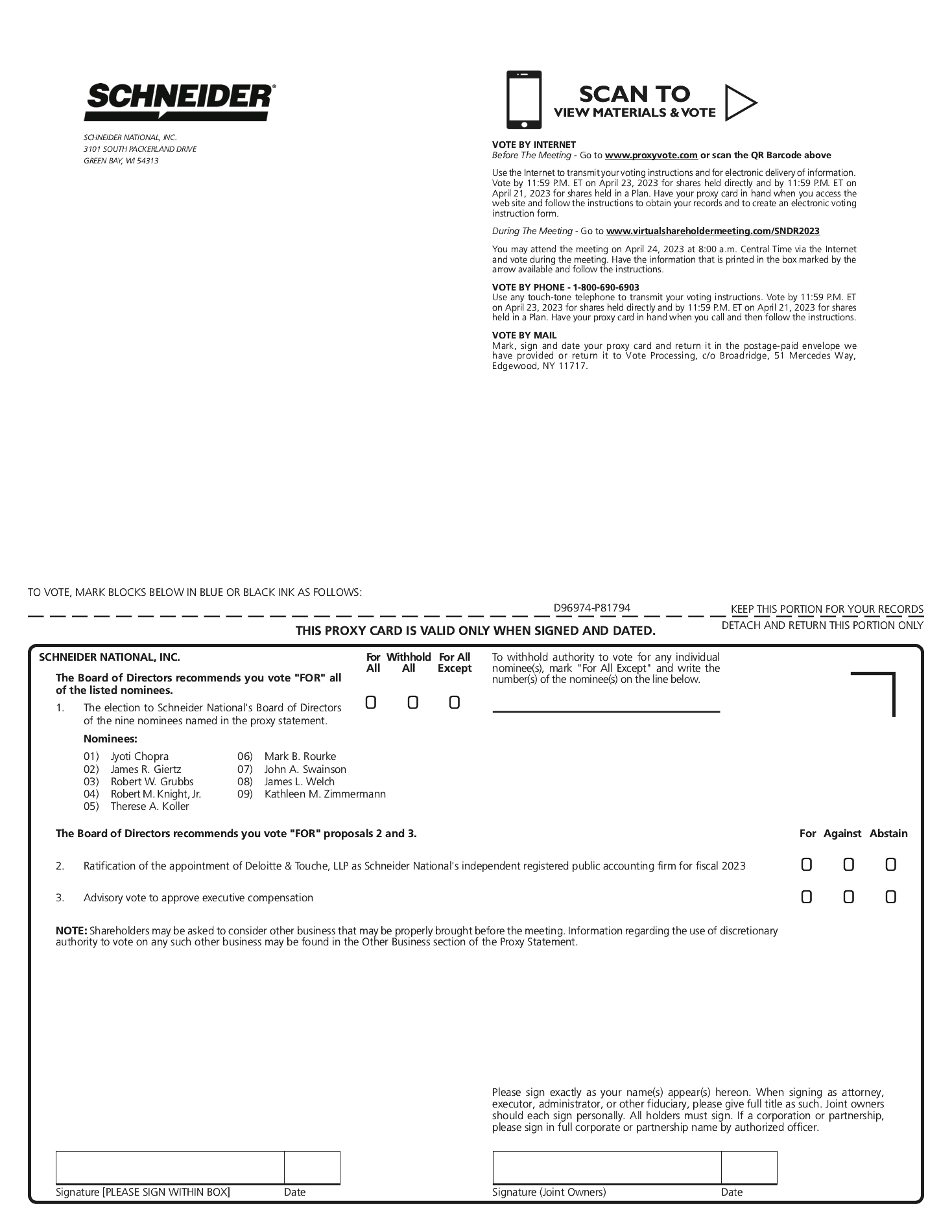
![[MISSING IMAGE: px_24schneiderproxy1pg01-bw.jpg]](https://capedge.com/proxy/DEF 14A/0001104659-24-034832/px_24schneiderproxy1pg01-bw.jpg)
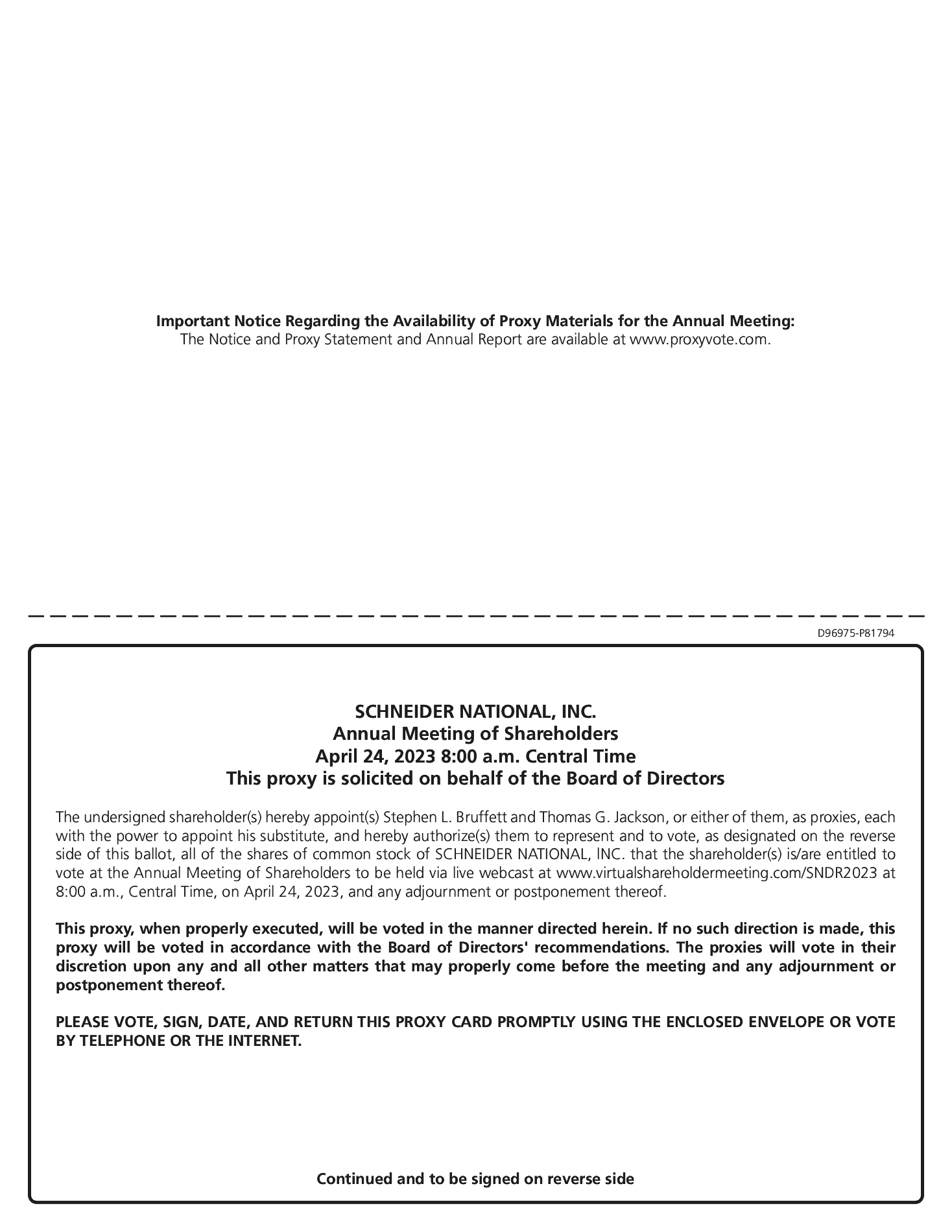
![[MISSING IMAGE: px_24schneiderproxy1pg02-bw.jpg]](https://capedge.com/proxy/DEF 14A/0001104659-24-034832/px_24schneiderproxy1pg02-bw.jpg)